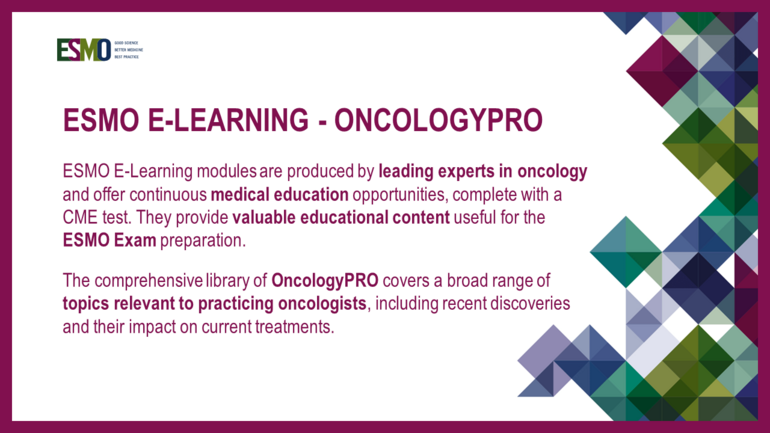In this E-Learning module, the author underlines that the determination of the histologic type / subtype of salivary gland tumours is pivotal. Systemic treatments, in particularly cytotoxics, have limited efficacy. Targetable molecular alterations depend on tumour subtype and performing a molecular profile allows guiding into clinical trials or expanded access programme. This module provides an excellent overview of genomic alterations, efficacy of targeted treatments and immunotherapy in rare head and neck tumours.
Salivary gland carcinomas are uncommon neoplasms accounting for up to 5% of all cancers of the head and neck. They typically occur in young patients and are characterised by slow growth, multiple local recurrences and prolonged clinical course, often with delayed development of distant metastases.
There are around 20 histologic subtypes. In this E-Learning module, the author presents, in a systemic way, specificities of mucoepidermoid carcinoma, adenocarcinoma, adenoid cystic carcinoma and salivary duct carcinoma. Concurrent with pathologic diversity, there is a remarkable genetic diversity. Most targeted therapies have shown lack of efficacy, probably related to the fact that there was no biomarker selection.
More recent studies have been conducted on the basis of molecular driven selection and have demonstrated efficacy of androgen deprivation in androgen receptor-positive salivary duct carcinoma, trastuzumab and ado-trastuzumab emtansine in HER2-positive salivary duct carcinoma and NTRK inhibitors in mammary analogue secretory carcinoma.
There is limited clinical activity of immune checkpoint inhibitors and predictive biomarkers are required. Combinatorial strategies should be considered to turn these cold tumours into hot tumours.
The author underlines that a multinational cooperation is required to conduct well designed clinical trials allowing homogeneity in terms of subtypes, disease stage, progressive disease at inclusion, quality of life analysis and patient reported outcomes.
In terms of other rare head and neck tumours, new distinct tumour entities in the sinonasal tract have been described in the 2017 WHO classification. Most of these newly described diagnostic entities are defined in part on their underlying viral or genetic mechanisms, supporting their separate classification and in some cases, offering potential therapeutic targets for the future. In case of sinonasal undifferenciated carcinoma, the author’s advice is for ensuring NUT and INI1 determination.
There is no indication for immunotherapy outside of clinical trials except for squamous cell carcinoma of sinonasal cavities. In case of tumour mutational burden > 10, the author advises considering anti-PD1 therapy within clinical trial or as an approved indication, depending on the country of practice.


